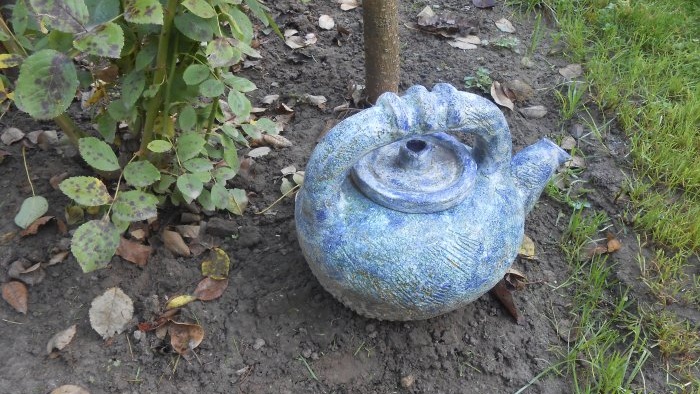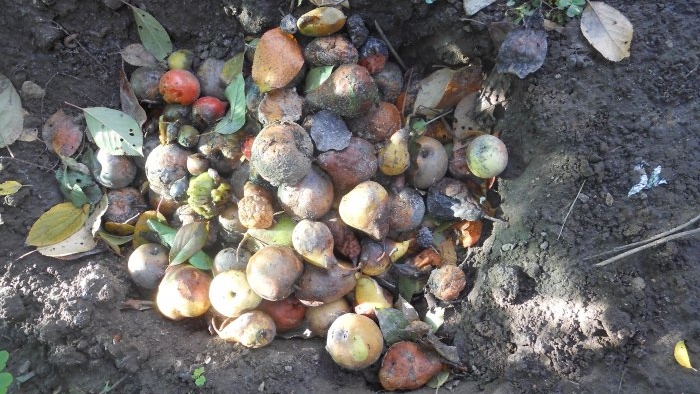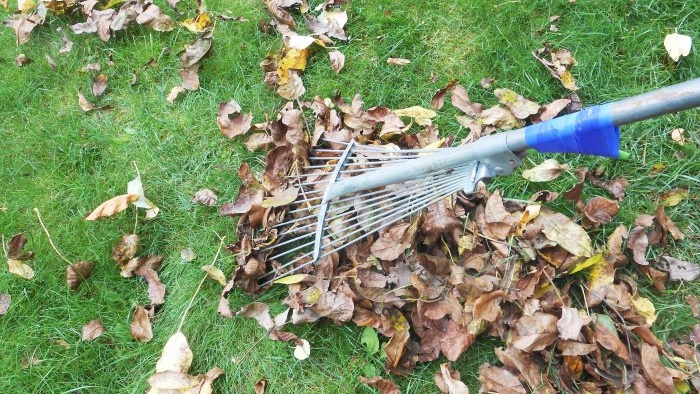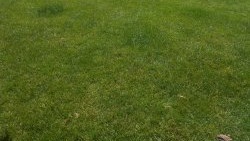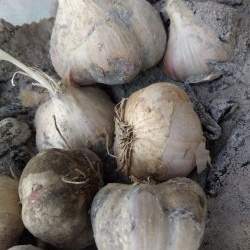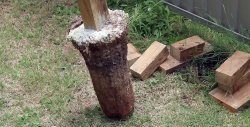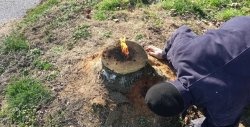The end of the summer season is a significant event. Before mothballing their dacha for the winter, experienced owners of country plots must carry out a number of important activities in the garden. What needs to be done in October - November to significantly facilitate your work in the spring?
List of works at the dacha in the second half of autumn:
1. Harvesting late and cold-resistant crops. At the end of the season, dill, parsley, arugula and other leafy vegetables are harvested, carrots, celery roots and beets are dug up, pumpkins and cabbage are cut, apples and late-ripening pears are collected.
2. Cleaning and disposal of plant waste. After the end of leaf fall, it is necessary to clear all parts of the site from carrion, fallen leaves and shoots pruned from perennials. Plant residues can be burned, and the resulting ashes can be used to fertilize the soil in beds, berry fields and gardens, as an effective potassium-phosphorus fertilizer with microelements.
Leaves and chopped branches can be placed in a compost bin, but it should be understood that this type of organic matter takes about 2 years to decompose. It is recommended to remove the carrion from the site or bury it to a depth of about 0.5 m.
3. Sowing garlic and other vegetables before winter. Pre-winter sowing is practiced by many summer residents. Typically, the following crops are planted at the end of the season: garlic, onions, beets, carrots, parsley, dill. These vegetables produce the earliest possible harvests, unlike those planted in the spring.
4. Sideration. Sowing green manure in open areas and in greenhouses is an effective way to increase soil fertility and cleanse the land of pathogenic microflora. In the second half of autumn, cold-resistant crops are most often sown: mustard, oilseed radish, winter oats, wheat, rye.
5. Cultivation of soil in beds. In cases where the plot is not planted with green manure, after harvesting, many gardeners immediately prepare the plot for spring sowing. Simultaneously with digging, the soil is enriched with superphosphate in combination with potassium sulfate or complex fertilizers with a predominance of phosphorus and potassium (ash, Ecoplant, Potassium Monophosphate, Universal Autumn for Fruit and Vegetable Crops).
6. Alkalinization of the soil. In cases where the soil in your area is highly acidic, fluff lime, dolomite flour or chalk are used for digging. These materials are used exclusively in autumn. It should be understood that the process of normalizing the acid balance of the soil takes about six months.
7. Planting garden strawberries and strawberries before winter. Seedlings and layering (runners) of strawberries take root well if they are planted 2-3 weeks before the onset of stable soil frosts.
8.Planting seedlings of fruit and ornamental trees and shrubs. According to gardeners, plants planted in the fall take root much better, naturally, if agricultural techniques are followed (filling the planting pit with phosphorus-potassium fertilizers and compost, water-replenishing watering, pruning seedlings, covering and mulching).
9. Pruning of bushes and trees, treatment against pests. In the fall, sanitary, thinning, shaping and rejuvenating pruning of plantings is mandatory. Some plants are pruned to stumps, for example, remontant raspberries, peonies, hydrangea, and clematis. At this time, the use of toxic insecticides and fungicides is most justified, especially in cases where perennials have suffered from outbreaks of infection or pest infestation in the current season.
10. Blockage of wounds on trees. It is recommended to cover cut areas and fresh cracks in the bark of trees with garden varnish or acrylic paint, otherwise there is a possibility of pathogenic microorganisms penetrating through them. Hollows on the trunks of old trees are treated with a solution of iron sulfate (10%).
11. Protection of tree trunks from rodents. If hares, mice and other animals appear on your site in winter, feeding on the young bark of trees, then it is recommended to wrap the lower parts of their trunks with available materials, for example, burlap, mesh, cardboard, etc.
12. Lawn conservation. After removing leaves, nuts and other fruits from the lawn, a final trim is carried out. Mowing is planned no later than 4 weeks before the predicted frost. During this time, the grass grows to a height of about 12 cm and in this form goes to winter.
13. Well conservation. At summer cottages, before frosts, they must drain the water and close the well.If you leave water in the pipes, you cannot avoid their rupture when the water freezes and expands.
14. Warming of bushes and young trees. Roses, raspberries, clematis, currants and other perennials, especially young ones, are usually insulated for the winter with fallen leaves, branches, a thick layer of mulch from tyrsa, compost, peat, moss or humus. This is necessary in regions where the winter air temperature is below –15°C.
15. Disinfection and conservation of greenhouses. After removing the last plants and their remains from closed structures, the soil and internal elements are disinfected using fungicidal solutions. The soil is spilled with solutions containing Bacillus hay or green Trichoderma, and the internal parts of the greenhouses are treated with a strong solution of potassium permanganate or copper sulfate (2%). Many summer residents sow green manure crops that have disinfecting properties, for example, white mustard or lupine, in greenhouse beds before winter.
16. Procurement of seeds. At the end of the season, you can collect seeds of dill, marigold, parsley, arugula, and lettuce, if there are plants on the site that have completely completed their growing season.
As you can see, even at the end of the season, summer residents have a certain scope of work, which it is advisable to complete in a timely manner in order to avoid numerous problems next summer. Easy work for you!
A curious way to root seedlings from branches in water - https://enn.washerhouse.com/7615-ljubopytnyj-sposob-ukorenenija-sazhencev-s-vetok-v-vode.html

